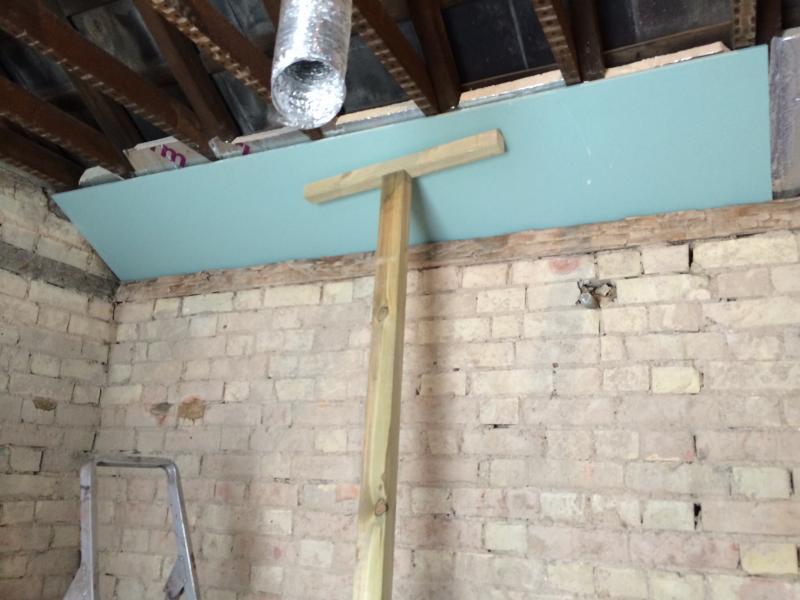I have spoken to CCF (national supplier of metal partitioning) and British Gypsum who offer their gypliner IWL solution.
Basically what I've been told is a 50mm track is the thinnest frame they offer which is completely independent of the brick wall and does not require additional brackets on the studs which fix to the wall.
There are smaller, say 25mm metal liners that they offer but these require the brackets on the stud. Therefore I must go for a 50mm frame, once plasterboard is added and tiles I may lose around 75mm all around the room which I'm not keen on but what choice do I have?
Could you just give me your reasons again as to why dot and dabbing onto a lime mortar wall won't work. I guess if I'm using heavy tiles the lot could fall on me like you said, but when I speak to a few friends who are builders they just say clean all the brick, wash wall, pva it and your be fine. M
I think it was another chap that said no to the dot and dab weight reasons/possible failure. My thoughts are is I thought plaster can at times react with cement to form a salting (hence why you prime/seal plaster walls when using cement adhesive.....
So if you dot and dab I wouldn't like the possibility of the dabs coming loose - I'd never want to chance that with the weight you are talking. I re-lined our room due to tile weight also and would never ever consider dot and dab when I did it, it wasn't on the cards. I would have re-designed things instead if I had to. Also I prefer to fix things properly to be honest. I've never liked the idea of the dot and dab route and also people have issues with the dabs holding a lot more moisture etc also not great in bathrooms.
What fittings are you putting in? The original room photos it looks very spacious and its a massive room for a bathroom already. I assume 1x sink, bath, shower cubical, toilet as standard? Any pics of supplies/lists etc layouts.
Personally if I was in your position I would go for the 50mm and plasterboard on that and take the hit on the combined depth. Alternatively if you really don't want to loose the space or if I didn't want to I'd be looking at another design. Your brickwork doesn't sound like its helping the situation really which is the core limiting option.
I would look at things in a different light. I would look at things from a positive point, instead of loosing that space what you gains is insulation/efficiency. So don't look at it as a minus point on loosing space. Think of it that you are adding insulation there which will keep the room stable/warm and such.
Those positives far out weigh loosing the space I think and with the room size and not being sure on the designs I'd guess you do have space cushion. But again it depends what you have in mind for the design/layout, and if you have already ordered fittings and fixtures etc.
I'm trying to think of any other options. Thoughts?
PS after most of our house has been plastered, we did actuall have a single wall fail. Plaster came right off in sheets the size of a dining table... Add tiles on that and adhesive and that's a whole lot of injury that could be caused. I forgot to add safety/piece of mind knowing that it couldn't just fall off is another positive in my eyes



